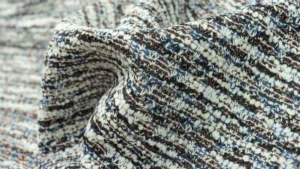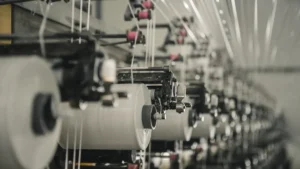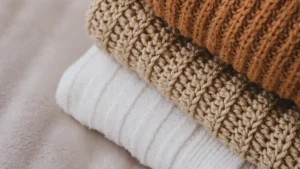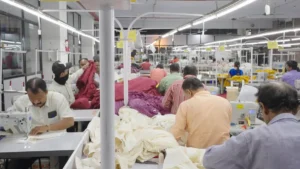
You want your knit side seams to hold their shape and resist stretch. Knit fabrics love to stretch, but without the right support, your side can lose its crisp lines. When you add stay tape, you create stability and help your garment last longer. Stay tape keeps seams from sagging, even with new 2025 yarns that promise more stretch. Using stay tape along the seam, at the armhole, and under a strong shoulder seam gives you a neat, comfortable fit. No matter your skill, stay tape helps you master stability and enjoy every project.
Key Takeaways
Using knit stay tape strengthens side seams, helping your sweater keep its shape and last longer.
Stay tape prevents common problems like stretching, twisting, and seam damage, ensuring a neat fit.
Choose the right tape type to match your fabric’s stretch and weight for the best results.
Apply stay tape before sewing and use proper stitches to keep seams stable and comfortable.
Careful sewing, steaming, and gentle washing protect your knitwear and extend its life.
Knit Side Seams
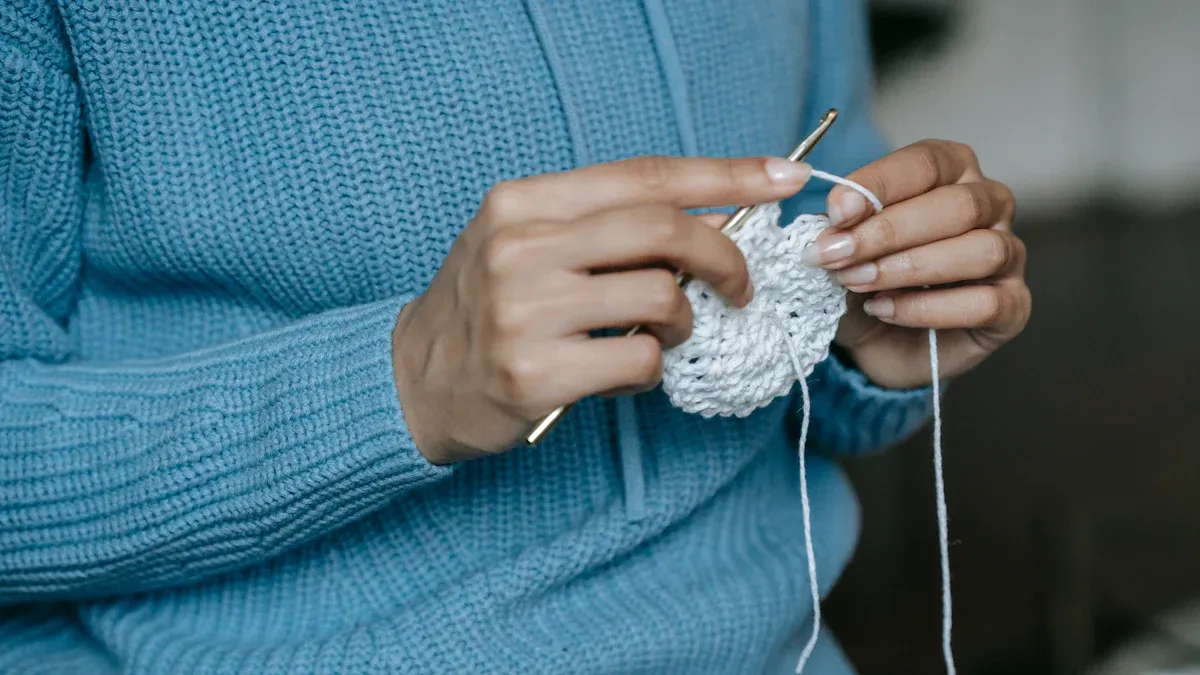
Durability
You want your knit side seams to last through years of wear. These seams give your sweater the strength it needs, especially when you use heavier yarns or create cabled patterns. Heavier or cabled sweaters weigh more than lighter garments. The side supports this extra weight and keeps the sweater from losing its shape. If you skip proper seaming or forget to add tape, your sweater may stretch out or even tear at the seam. Common problems include seam slippage, puckering, and even yarn breakage. These issues often appear after washing or wearing your sweater. You can avoid them by using stay tape along the side seam. This tape acts like a backbone, holding the loops together and stopping the threads from pulling apart. When you use stay tape, you protect your knit side seams from damage and make your garment much more durable.
Fit and Shape
A well-made side seam helps your sweater keep its shape. Without support, the side can sag or twist, making your sweater look uneven. Stay tape keeps the seam straight and prevents the fabric from stretching out of place. You get a better fit because the tape holds the side in the right position. This is important for both seamed vs seamless designs. Even seamless sweaters can benefit from tape at key points, like the underarm or strong shoulder seam. When you use stay tape, you make sure your sweater fits well and looks neat, no matter how often you wear it.
Tip: Always add stay tape before you sew the side seam. This step gives you more control over the final shape and fit.
Comfort
You want your sweater to feel good every time you wear it. Stable knit side seams help with comfort by stopping the side from bunching or pulling. When you use stay tape, you prevent the seam from rubbing or causing irritation. The tape also keeps the seam flat, so you do not feel any bulky edges. Modern tapes are soft and flexible, so they move with your body and do not add stiffness. You can enjoy both comfort and style when you use stay tape in your seaming process.
A stable side seam makes a big difference in how your sweater looks, feels, and lasts. In 2025, with new yarns and trends, you need to pay extra attention to seam stability. Stay tape, careful seaming, and the right techniques help you create knitwear that stands the test of time.
Problems Without Stability
Stretching
When you skip using stay tape, your seams on stretchy knit fabric can lose their shape quickly. Knitwear needs support to keep the seam from stretching out. Without stay tape, the fabric pulls and stretches during wear. You may notice the side of your sweater sagging or growing longer. This happens because the yarn moves and the seam cannot hold it in place.
Seam slippage is a common problem. The seam slides under pressure, especially if you use slippery yarns or a narrow seam margin.
You may see your sweater rise up at the underarm or side when you move your arms.
The fabric can rub against your skin, causing irritation or even redness.
Stay tape helps you avoid these issues. It holds the seam steady and keeps the fabric from moving too much. You get a garment that keeps its shape and feels good every time you wear it.
Distortion
Unstable seams often lead to distortion. You want your sweater to look neat, but without stay tape, the fabric can twist or pucker. Here are some common types of distortion:
Type of Distortion | Description |
|---|---|
Stretching out of shape | Fabric pulls during sewing, causing uneven areas, especially on the side. |
Puckering | Seams look wavy or rippled from tension or the wrong stitch type. |
Twisting or uneven hems | Edges twist or do not lie flat, often from poor stabilization. |
Seam growth or seam popping | Seams gape or pop open because the fabric stretches and lacks reinforcement. |
Stay tape prevents these problems. It keeps the seam flat and smooth. You avoid puckering and twisting, so your sweater looks professional.
Poor Fit
Poor seam stability can ruin the fit of your knitwear. If you do not use stay tape, the seam may break or pop when the fabric stretches. This is a big problem for fitted or tailored sweaters.
Seams that break make the garment come apart.
Incorrect stitch type or tension can cause bulky seams or discomfort.
The fit suffers, and your sweater may not look or feel right.
Stay tape gives you control. It lets you keep the seam from stretching too much. You get a better fit, and your sweater stays comfortable and strong.
Tip: Always use stay tape when you sew seams on stretchy knit fabric. This simple step helps you avoid stretching, distortion, and poor fit.
Stabilizing Methods

When you want your knitwear to last, you need to choose the right way to stabilize seams. In 2025, you have several options for seam treatment. Each method works best for certain fabrics and projects. Let’s look at the most common ways to stabilize knit side seams and see how they compare.
Traditional Seaming
Traditional seaming uses strong stitches to join your fabric. You often use a backstitch or mattress stitch for hand-sewn seams. For machine sewing, you might use a straight or zigzag stitch. This method gives you control and works with almost any yarn. You can repair or adjust these seams easily.
Traditional seaming offers great strength and durability. You can use it for heavy sweaters or garments that get a lot of wear.
You can use high-quality polyester thread to add even more strength and flexibility.
If you want to stabilize seams further, you can add a strip of tape along the seam line. This tape helps keep the seam from stretching out.
You can use selvedge stitches to add extra support at the edge of your fabric.
Tip: When you sew, avoid stretching the fabric. This keeps your seam strong and helps your garment keep its shape.
Here is a quick comparison of traditional seaming and modern methods:
Method | Durability | Repairability | Best Use Cases |
|---|---|---|---|
Traditional Seaming | Very strong | Easy | Heavy knits, high-stress areas |
Fabric Bonding | Moderate | Hard | Lightweight, smooth finishes |
Variable | Hard | Thermoplastic fabrics, fast work |
You can see that traditional seaming gives you the best strength and is easy to fix if needed.
Knit Stay Tape
Knit stay tape is a narrow strip that you sew or fuse along the seam line. This tape helps you keep the seam stable and stops it from stretching or twisting. Using stay tape is one of the best ways to stabilize seams in modern knitwear.
Knit stay tape prevents seam stretching and makes sewing easier.
The tape stabilizes seams so your garment keeps its shape.
You get support without losing movement, which is important for comfort.
The tape works well in curved or high-stress areas like shoulder seams, necklines, and hems.
Using stay tape improves durability and helps your sweater look new for longer.
You can find knit stay tape in many types. Some tapes are fusible, so you iron them on. Others are sewn in place. Lightweight, fine tapes work best for soft knits. Heavier tapes can feel bulky and may not stretch enough for very stretchy fabrics.
Note: Always match the tape to your fabric. If you use a tape that is too stiff, your seam may feel odd or look bulky.
Here is a table to help you choose the right tape:
Tape Type | Durability | Ease of Use | Best For | Notes |
|---|---|---|---|---|
Knit Stay Tape | Light to medium | Easy | Most knits, curved seams | May cause irritation if too stiff |
Fusible Stay Tape | Medium | Easy | Stable seams, less stretch needed | Zero stretch, not for very stretchy knits |
Woven Bias Tape | High | Moderate | Stretchy knits, shaped seams | Takes time to prepare |
You can use knit stay tape in many places. Try using stay tape at the side seam, armhole, or shoulder seam for best results. The tape keeps your seams flat and smooth, so your sweater looks neat.
Clear Elastic
Clear elastic is a thin, stretchy strip that you sew into the seam. This tape is popular for areas that need both stretch and support. You often use clear elastic in shoulder seams, necklines, and short body seams.
Clear elastic gives you excellent stretch and recovery, much like spandex.
The tape matches the width of most overlock seams, so it fits well in close-fitting tops.
You do not need to fuse this tape, and you can sew it with a serger or zigzag stitch.
The tape is lightweight, so it does not add bulk.
However, clear elastic can be tricky to use. The tape may slip or curl while you sew. Some people do not like the feel of the tape, as it can seem plastic or sticky. The tape works best for synthetic knits and close-fitting garments.
Tip: Use clear elastic for seams that need to stretch but still hold their shape, like side seams in activewear.
Keep in mind that clear elastic is not as strong as braided or woven elastic. The tape may not last as long if you stretch and wash the garment often. For high-stress seams, you may want to use a stronger tape or combine clear elastic with another method.
Here is a table to compare the main seam treatment options:
Seam Treatment | Pros | Cons | Best Use Cases |
|---|---|---|---|
Knit Stay Tape | Easy to use, keeps seams flat, supports shape | Can be too rigid for very stretchy knits | Most knits, side seams, curved areas |
Clear Elastic | Great stretch, lightweight, fits overlock seams | Slippery, can feel plastic, less durable | Activewear, synthetic knits |
Fabric Strips | Adds stability, matches stretch | Adds bulk, not for very stretchy knits | Cotton jersey, blends |
When you choose a method to stabilize seams, think about your fabric, the fit you want, and how much stretch you need. Using stay tape, clear elastic, or traditional seaming can help you create garments that last and look great. You can mix and match these methods for the best results. Always test your tape on a scrap of fabric before you start seaming your project.
Note: Stabilizing seams is the key to professional-looking knitwear. Take your time with each seam treatment, and your sweater will reward you with years of wear.
Step-by-Step Guide
Preparation
Start by getting your materials ready. Pre-wash your knit fabric in cool or warm water and dry it on low. This step helps prevent shrinking after you finish your project. Choose a ballpoint or stretch needle for your machine. Pick stretch thread for areas that need to move. Lay your fabric flat and use pattern weights instead of pins. Cut with sharp scissors or a rotary cutter for clean edges. Before you begin sewing knit fabric, steam the pieces. Steaming relaxes the fibers and helps the fabric keep its shape. Apply knit stay tape to the wrong side of the fabric at the side seam, necklines, and shoulder seams. The tape gives extra strength and stops stretching. Use a walking foot if you have one. This tool feeds both layers evenly and keeps the tape in place.
Preparation Step | Why It Matters |
|---|---|
Pre-wash fabric | Stops shrinking after sewing |
Use knit stay tape | Adds strength and prevents stretching |
Steam fabric | Relaxes fibers and sets shape |
Choose right needle | Prevents skipped stitches and fabric damage |
Seaming Process
When you sew with stretch fabrics, keep your seam allowances even. Place knit stay tape along the seam line before you start. Use a zigzag or stretch stitch. These stitches move with the fabric and keep the tape from breaking. Do not pull the fabric as you sew. Let the machine and tape do the work. If you use a serger, feed the tape under the presser foot with the fabric. Always backstitch at the start and end to lock the tape and seam. Trim extra fabric to reduce bulk. Press the seam flat with steam. This step helps the tape blend into the fabric and keeps the seam smooth.
Tip: Test your stitch and tape on a scrap before you start the real seam. This helps you check tension and stitch length.
Finishing Tips
After seaming, finish the edges with a serger or a narrow zigzag stitch. This keeps the tape secure and stops fraying. For hems, use a twin needle or coverstitch for a stretchy, strong finish. Wash your garment with gentle soap and cold water. Block the piece by shaping it while damp and pinning it to size. Blocking sets the fabric and helps the tape hold the side seam in place. Always handle your knitwear gently. Using stay tape, steaming, and careful washing will help your garment last for years.
Troubleshooting
Common Mistakes
You might run into problems when you work with knit side seams. One common mistake is skipping knit stay tape. If you forget to add tape, your seams can stretch out or twist. Sometimes, you may use the wrong type of tape. A tape that is too stiff or too loose will not give the right support. You may also sew the tape in the wrong spot or let it shift as you sew. This can cause the seam to bunch or pucker. Using too much tape or not enough can also lead to problems. If you do not press the seam after adding knit stay tape, the tape may not blend in well. You might also pull the fabric too hard, which stretches the seam and the tape. These mistakes can make your sweater lose its shape or feel uncomfortable.
Fixes
You can fix most problems with knit stay tape if you catch them early. If you see the tape bunching, carefully unpick the seam and lay the tape flat. Try to keep the tape smooth and even as you sew. If you used the wrong tape, remove it and choose a tape that matches your fabric’s stretch. When you notice the seam stretching, add a second layer of knit stay tape for extra support. If the seam feels bulky, trim away extra tape and press the seam flat. For seams that twist, check that the tape runs straight along the seam line. You can also use a walking foot to help feed the tape and fabric evenly. Always test your tape and stitch on a scrap before you fix the real seam.
Tip: If you see a small snag or loose thread near the tape, push it to the back and spot-fix it instead of cutting.
Prevention
You can avoid most problems by following a few simple steps. Experts suggest you:
Choose durable, tightly woven fabrics and reinforced synthetics for your projects.
Use knit stay tape that matches your fabric’s stretch and weight.
Avoid raw edges and unfinished hems to keep the tape and seam from unraveling.
Align the fabric grain before you add knit stay tape to prevent twisting.
Use proper sewing techniques, like lock stitches and careful thread management, to secure the tape.
Reinforce seams in stretch fabrics with elastomeric yarns and knit stay tape.
Handle your knitwear gently and comb away fuzz instead of using fabric shavers near the tape.
Use tools like magnetic embroidery hoops to keep the tape and fabric even.
Press seams and adjust stitch settings to help the tape do its job.
Wash, dry, and store your garments with care to protect the tape and seam shape.
Repair minor snags by pushing loose threads to the back and spot-fixing near the tape.
When you use knit stay tape the right way, you help your sweater keep its shape and last longer. Paying attention to how you add tape and how you care for your garment makes a big difference. You can enjoy strong, neat seams every time you use knit stay tape.
You want your knit side seams to last, fit well, and feel comfortable. Using knit stay tape gives your seams the stability they need. Tape keeps your sweater in shape and helps you avoid stretching or twisting. Try different tape types, like fusible tape or clear tape, to see what works best. You can use tape at the side seam, shoulder seam, and neckline. Stay tape supports your project from start to finish. Keep learning new ways to use tape and knit stay tape for better results.
For ongoing improvement, try these:
Use stretch threads for extra stay and recovery.
Invest in a walking foot to keep tape and fabric even.
Choose ballpoint needles to avoid skipped stitches.
Experiment with zigzag stitches and twin needles for strong hems.
Apply fusible tape in shoulder seams for extra stay.
Stay focused on tape and knit stay tape for every project. You will see better fit, comfort, and durability with every seam. Tape and stay tape make your knit side seams strong for 2025 and beyond.
FAQ
How do you choose the right stay tape for your knit project?
You should match the tape to your fabric’s stretch and weight. Lightweight knits need soft, flexible tape. Heavier knits need stronger tape. Always test a small piece first to see how it feels and stretches.
Can you wash garments with stay tape or clear elastic?
Yes, you can wash these garments. Use cold water and gentle soap. Avoid high heat in the dryer. Lay your knitwear flat to dry. This keeps the tape and seams strong.
What if your seam still stretches after adding stay tape?
Check if you used the correct tape and stitch. Try adding a second layer of tape for extra support. Make sure you did not pull the fabric while sewing. Press the seam flat after sewing.
Do seamless sweaters need seam stabilization?
Yes, even seamless sweaters benefit from stabilization. You can add stay tape at the underarm, shoulder, or side areas. This helps prevent stretching and keeps the sweater in shape.
Is it possible to remove or replace stay tape after sewing?
You can remove stay tape by carefully unpicking the seam. Use a seam ripper and work slowly. Replace the tape with a better match if needed. Always test the new tape on a scrap first.



